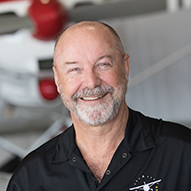Standing between every flight school business and the quest to earn a profit is cost. Expenses. We can never separate ourselves from expenses. Yet we can control them to a degree. In fact, if we are to be truly successful in the operation of our businesses, we must control cost to the extent possible.
One of the major overriding costs of any flight school business is maintenance. Aircraft not only require normal mechanical repairs as might a car or a boat, but regulatory requirements necessitate inspections and maintenance that must take place in order to continue flying. This raises the question, should we do the maintenance ourselves, or should we farm it out to a local shop?
“You have to run the numbers,” says Bill Boege of Propellerhead Aviation in Winter Haven, Fla. “Every situation is unique.” Boege is an instructor and a mechanic who has been running his own successfully growing business for several years. He contracts for CFI services and employs multiple mechanics in his shop.
The practicality of choosing who should be doing your maintenance depends on a variety of factors. If you’re a sole proprietor flying only one airplane with one instructor, it may make sense to do your own maintenance in an attempt to control costs. Then again, if you’ve got three or more aircraft in your fleet, you might be better served to farm your maintenance out and focus the time saved on marketing, customer service, and other business tasks that require your specific attention.
Should you choose to work with a local shop to do your maintenance, there are still options that can cut costs overall. “You can negotiate a rate,” Boege suggests. Committing to using your local shop for scheduled maintenance and repairs may well allow you to shave a few dollars off the hourly shop rate. “That’s especially true if you’ve got more than one airplane,” says Boege. Those few dollars an hour saved can add up over the course of the year, and the shop will still be happy to have a new, dependable customer.
Other options may seem less obvious, but can just as easily save money on maintenance. If you use identical aircraft, that can save you money. Boege makes the point that not only will you save by only needing one set of manuals and one set of spare parts, but you may be able to negotiate favorable pricing when buying some parts used or in bulk since they can be used in any of the aircraft in your fleet.
Don’t overlook the option of owner-assisted maintenance, either. That can cut your bill considerably. As Boege explains it, “If you’ve got a mechanically inclined CFI on staff who isn’t flying, they can help out in the shop.“ That CFI or other office staffer may not be an A&P mechanic, but they can legally work under the direction of an A&P to do a considerable amount of work that would normally bill out at the shop rate. However, you’ll be paying them from your payroll at a rate that’s more than likely quite a bit lower than the shop’s rate for a mechanic.
There’s also the consideration of up-time. If the shop you work with is agreeable, they may be able to do maintenance on aircraft overnight, while you and your customers are sleeping. That puts your aircraft down for maintenance when your customers aren’t trying to book them, leaving you more flyable time on your schedule, and more customers in the air.



